Crowded Space
Discover how Lloyd’s helps make space operations safer and more sustainable.
On a crisp, winter’s morning in 1985, Ronald Reagan became the first US president to present Lloyd’s silver medals to four NASA astronauts from the space shuttle Discovery. The reason? ‘Yankee ingenuity,’ according to President Regan. Three weeks earlier, the astronauts had accomplished the first-ever space salvage recovery. Two communication satellites – Westar 6 and Palapa B-2 – had been recovered in a mission funded by the Lloyd’s of London insurance market. Their retrieval, using ground-breaking technology and assiduous planning, marked an inflection point in the commercial use of space.
This mission taught us a lot about rendezvous techniques and the handling of massive objects in orbit.
The problem with the satellites had begun at their launch from the space shuttle a year earlier when both entered elliptical rather than circular orbits, rendering them useless as communication satellites. Their combined insurance value was $180m. Lloyd’s underwriters paid their share of the claim but some proposed an ambitious plan to mitigate the market’s losses while allowing the satellites to, in part, fulfil their mission.
Having paid the claim, ownership of the satellites had been acquired by underwriters. The market's proposal was for a Lloyd’s-funded second shuttle mission to retrieve the two errant satellites. Applying their expertise and collaboration skills, underwriters were able to amass sufficient support to back the $10m operation. If successful, once captured and returned to Earth, the satellites would be refurbished by their manufacturer Hughes Aircraft Company, then resold and relaunched. Not only would this represent a financial saving, it would also mean that two technologically advanced satellites, functional apart from their orbits, could be given another lease of life. While underwriters could not predict precisely how much money would be saved, they knew it would be a significant sum – if NASA and the shuttle astronauts could make it work.
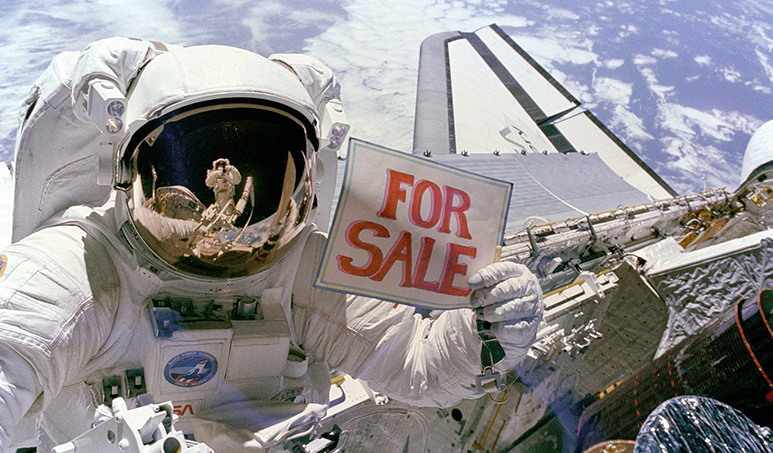
Crew member Dale Gardner. Credit NASA
In November 1984, the Lloyd’s market’s plan came to fruition. Discovery blasted off from Florida on an eight-day mission, one day of which would be devoted to rescuing the satellites. Using untested technology and relying on the astronauts’ skills, the stakes were high.
220 miles above Earth travelling at 17,000 miles-an-hour, the shuttle closed on the satellites’ positions. The astronauts busied themselves preparing ‘the stinger’ – a harpoon-like device that would be shot into the satellites’ engine nozzles to secure a line. When the shuttle and first satellite were just metres apart, space-suited astronaut Joe Allen used his jet pack to reach the satellite and manually fire the stinger. It worked. In micro gravity the satellite weighed virtually nothing so Allen, aided by the shuttle’s mechanical arm, was able to manoeuvre it back to the shuttle’s payload bay where he and Dale Gardner bolted an adapter to it that allowed it to be secured inside the shuttle for re-entry. The second satellite was also retrieved.

Dale Gardner retrieves Westar 6. Credit NASA
The mission was a resounding success. “Their salvage operation was a brilliant illustration of space as a workplace and space as a place where commercial possibilities exist,” President Regan told journalists in the White House. Post-landing inspections revealed the satellites to be in excellent condition and negotiations for their resale began. After Lloyd’s involvement, the space shuttle went on to retrieve more satellites during its operational lifetime.
Lloyd’s of London was a pioneer of with marine salvage for hundreds of years. How fitting, then, that it should usher in the age of space salvage and help set the course for the decluttering of our planet’s skies.
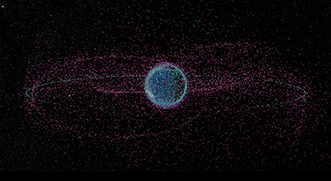
Travelling at 17,000mph in orbit, even the tiniest speck of space debris can chip windows and dent solar cells. Lloyd’s is working with data specialists (and Lloyd’s Lab alumnus) Privateer to track and monitor the movement of space debris.
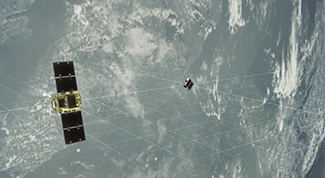
The Lloyd’s market is now providing risk mitigation solutions for the emerging ‘orbital economy’ - helping Astroscale’s new end-of-life satellite retrieval service to get off the ground.
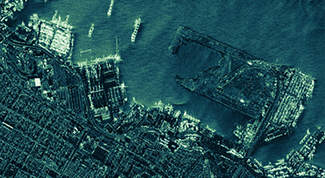
How Lloyd’s Lab alumnus ICEYE’s ‘persistent monitoring’ satellites can help manage and mitigate the impacts of climate change.
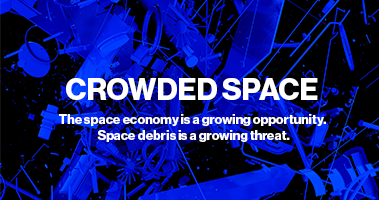
Discover how Lloyd’s helps make space operations safer and more sustainable.